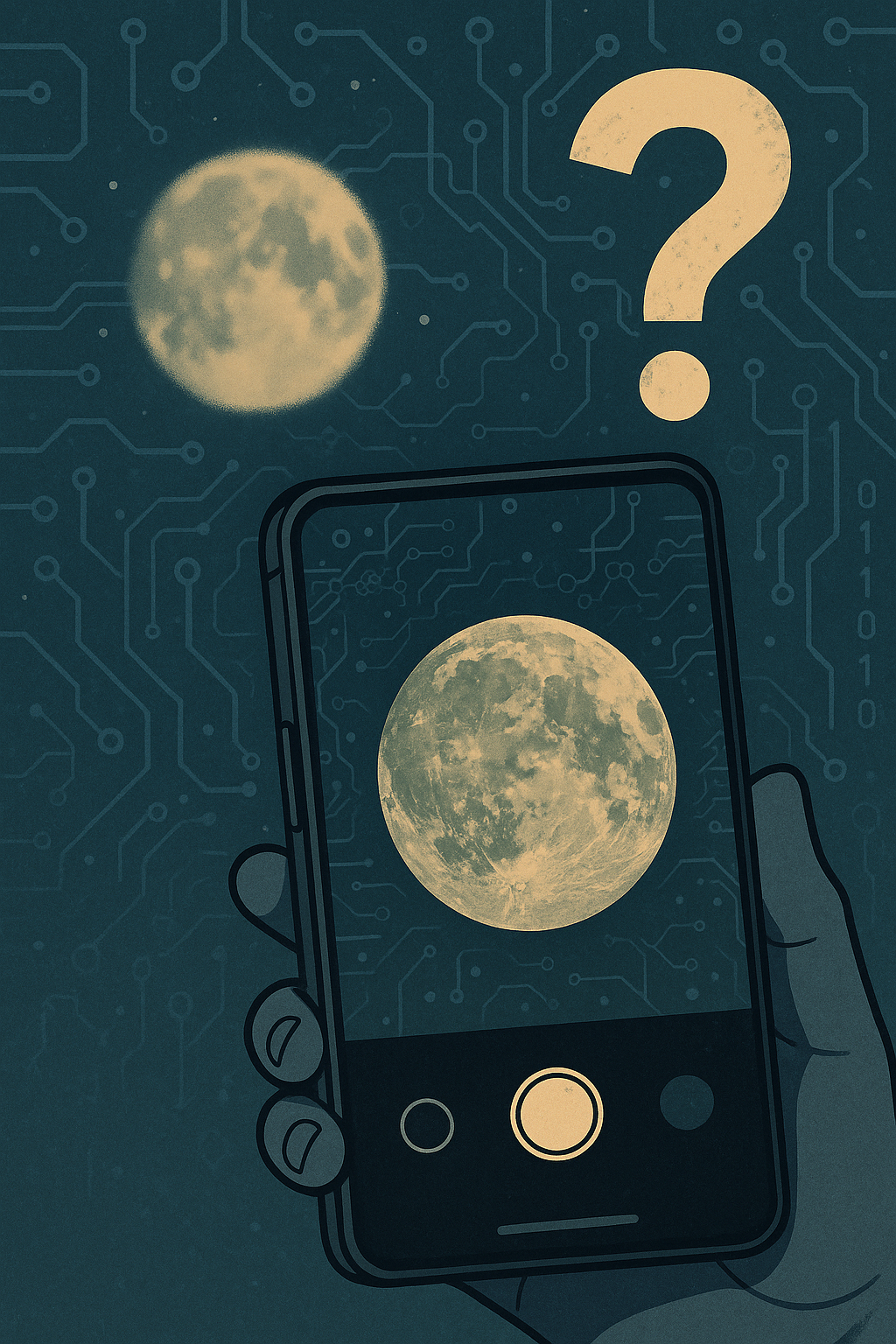
Faking the Moon: Samsung’s Schemes
When Samsung unveiled its advanced “Space Zoom” feature on the Galaxy S20 Ultra, many were astonished by the crisp images of the moon it produced. But in 2023, the internet erupted with a question: are those moon shots real, or are they too good to be true?
“Since the Galaxy S21 series, Scene Optimiser has had the capacity to recognise the moon as an object. This means that the detail enhancement engine, a key feature of Scene Optimiser, is applied to photos of the moon.”
— Samsung
According to Samsung, the moon photos captured by S-series phones are not outright fake, but they are heavily enhanced using AI. When a user points their phone at the moon, the device’s scene optimizer recognizes it and overlays AI-enhanced textures onto the image, creating a sharp and dramatic result.
This revelation sparked a heated debate. Many users felt misled, arguing that they expected a photograph, not a computer-generated reconstruction. Others defended Samsung, saying the AI enhancements are no different from what most modern cameras already do to improve image quality.
The incident also raises deeper questions about photography in the age of AI. When does enhancement become deception? Is it ethical to market a feature as a photographic capability when it relies so heavily on synthetic data?
For context, Samsung isn’t alone in using AI for image processing. Apple, Google, and others apply computational photography to adjust lighting, focus, and clarity. But Samsung’s moon mode crossed into new territory by potentially generating details that weren’t actually there in the original capture.
In response to criticism, Samsung clarified its technology and updated documentation to explain how scene recognition and detail optimization work. Still, transparency came only after online backlash, leaving many wondering if clearer disclosure should’ve been there from the start.
At the heart of this controversy is a philosophical question: Should smartphone photography strive to be accurate, or impressive? And if AI is the new darkroom, do users deserve to know how their photos are being altered?
In a world where images are trusted to tell the truth, the blending of real and artificial elements—even in a moon shot—has implications far beyond just photography. As AI reshapes the lens through which we view the world, companies must tread carefully between innovation and integrity.